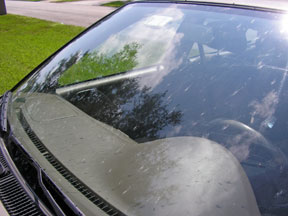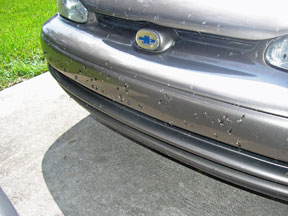Love is in the air (and on my bumper)
Ah, fall. The time of year when Central Floridians’ thoughts turn to love. Love bugs, that is.
Twice a year, each spring and fall, Florida is invaded by Plecia nearctica, a/k/a love bug, a/k/a honeymoon fly, a/k/a March fly. I’ve only heard them referred to as love bugs, and I definitely do not love them.

I drove 50 miles to Lakeland on Sunday. Along the way, my windshield was bombarded with the rat-a-tat-tat of love bugs smashing to their death, leaving behind a white caustic substance. No amount of windshield wiper fluid would get rid of it.
And by the time I got to my destination, my front bumper was covered with them.
 It wouldn't be so bad if they were just a nuisance (they are). But this is their mating season, so they, uh, travel a lot in pairs. And there are a LOT of them, and they are EVERYWHERE. They are harmless to humans - they don't bite, don't sting - but if their remains are left on car paint for more than a day or two, they can actually eat through the paint. As soon as I arrived at my destination, I immediately began scrubbing their little bodies and caustic insides off the car and windshield . . . and it was no easy task after just an hour of contact.
It wouldn't be so bad if they were just a nuisance (they are). But this is their mating season, so they, uh, travel a lot in pairs. And there are a LOT of them, and they are EVERYWHERE. They are harmless to humans - they don't bite, don't sting - but if their remains are left on car paint for more than a day or two, they can actually eat through the paint. As soon as I arrived at my destination, I immediately began scrubbing their little bodies and caustic insides off the car and windshield . . . and it was no easy task after just an hour of contact.Some folks tell the story that these bugs are the result of a genetic experiment gone wrong at the University of Florida years ago. Internet rumors abound. But when you check it out on Snopes (the best web site to check out internet rumors or whether a forwarded e-mail is legit), you'll find that love bugs are originally from Central America and first arrived in Florida in 1947. It's certainly not as interesting as a biological botch, but then again, the truth can be pretty boring. I'll just be glad when they leave for parts unknown in a few weeks.


<< Home